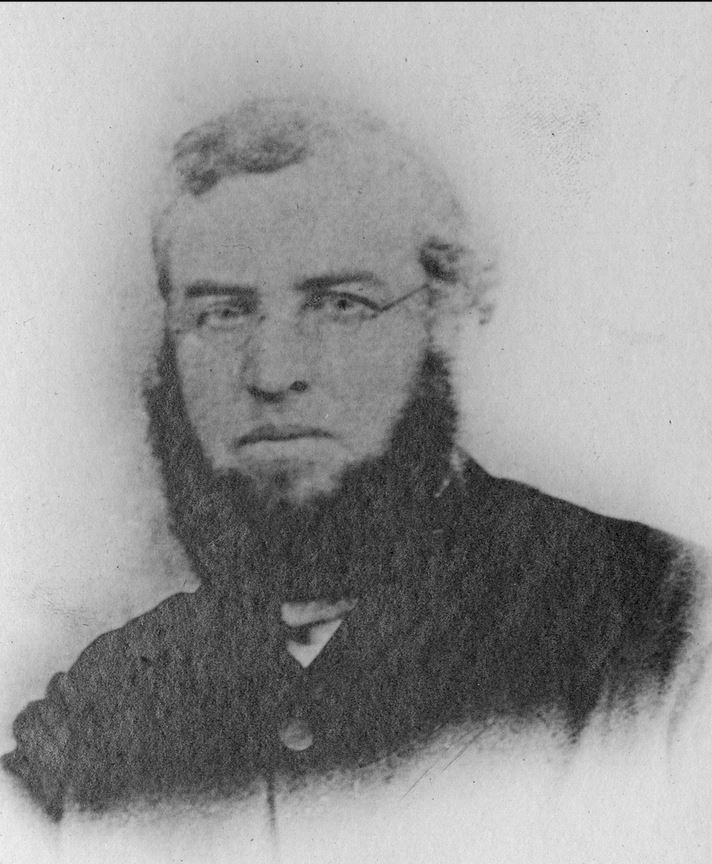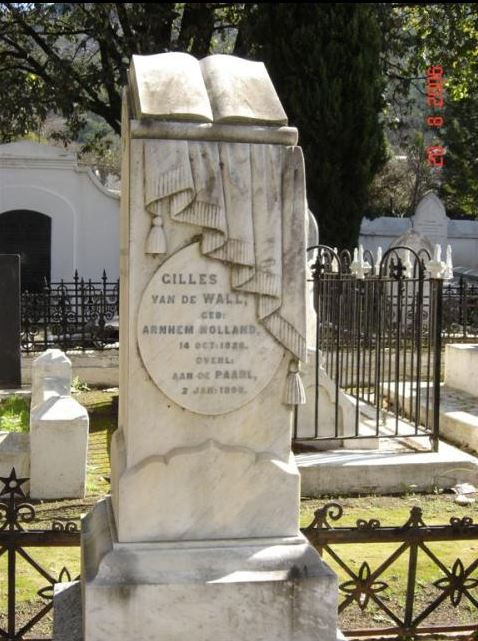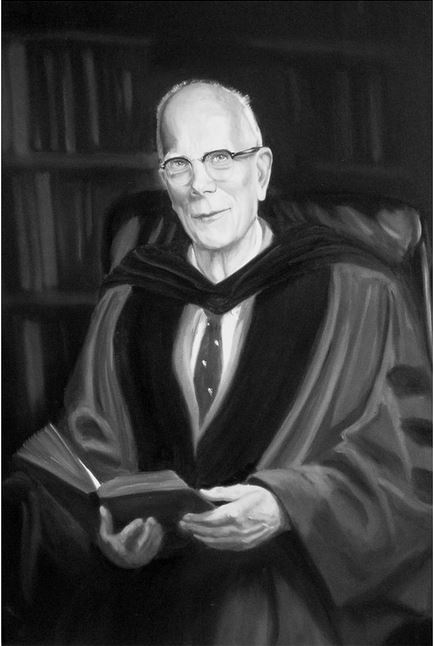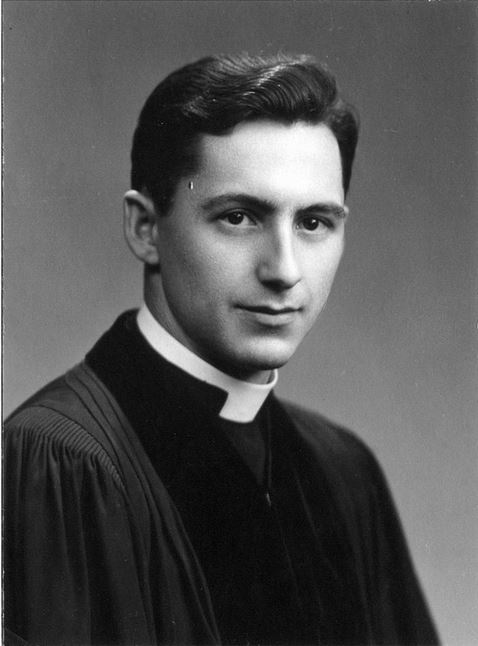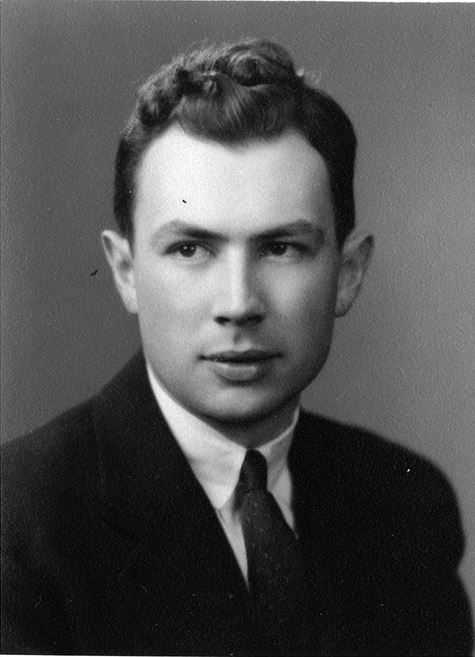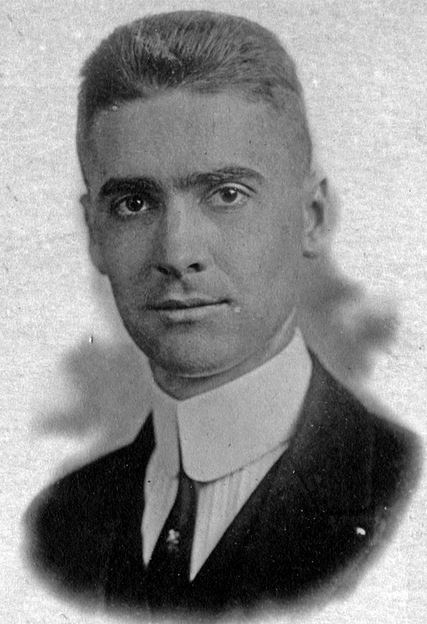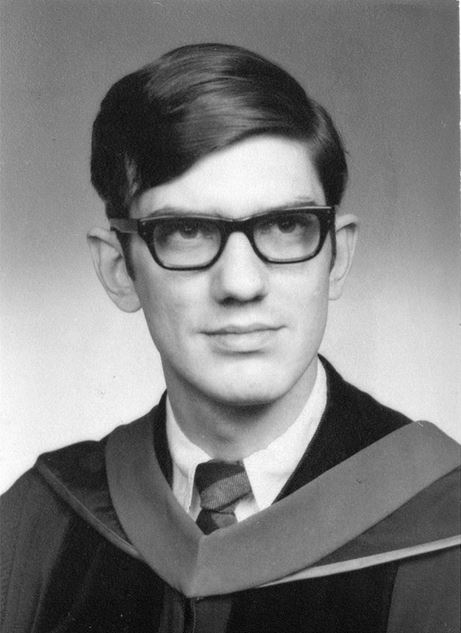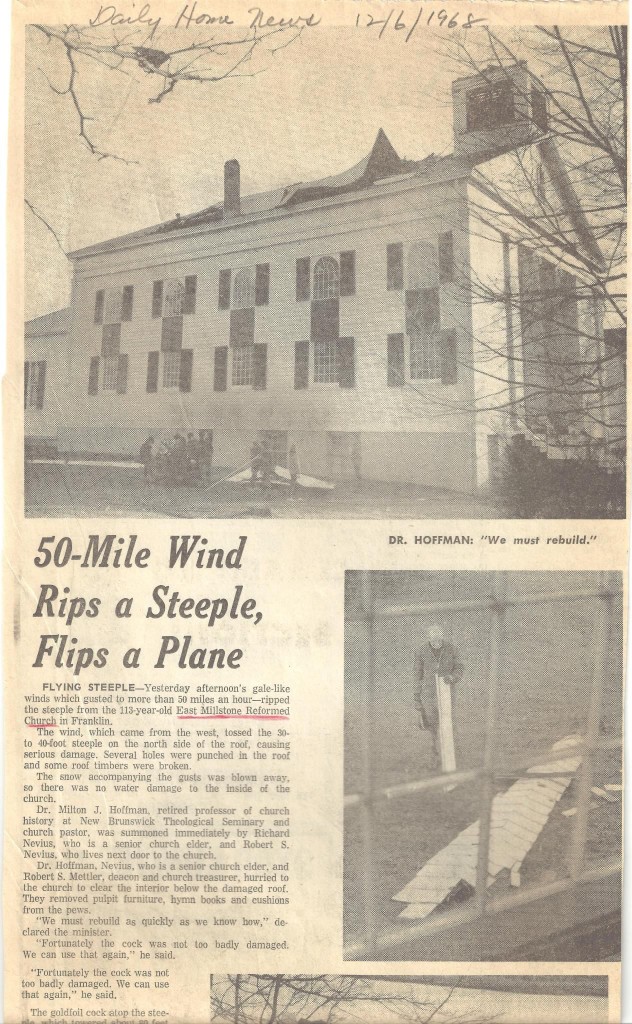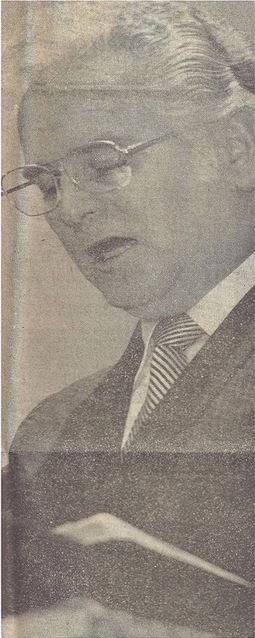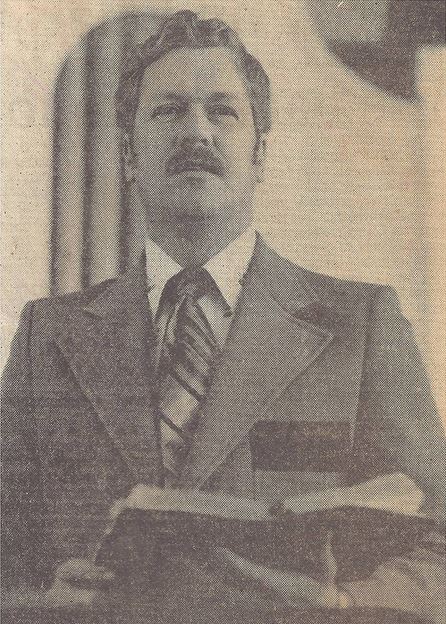Preface
Although our church is much more about our people then about the building, we find that many people are curious about the history of the actual church building that we inhabit.
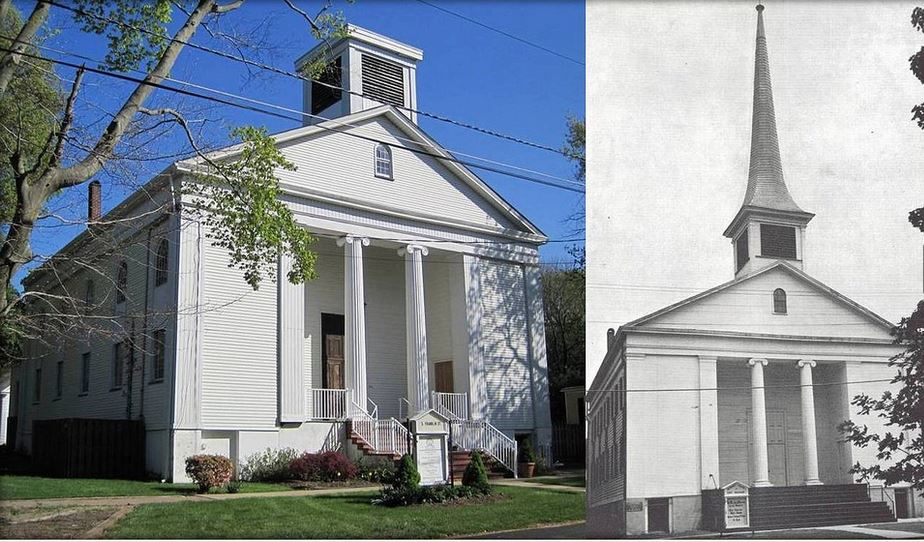
We meet in a beautiful, historic building dating back to 1855 and are blessed to have been entrusted with it in its most recent chapter.
To be sure, the doctrines, practices, and even denominations of those who have worshiped in this beautiful building have fluctuated through time, and our services today look very different than services in the past!
Still, there’s something kind of cool about being connected through history to a long line of faithful believers who sojourned before us. We will surely see these same people someday in glory (and possibly exchange stories on the difficulties and woes of historic building maintenance!).
But for now, it’s our turn to carry the torch! We’re full of fresh faces, young blood, new energy, and passion to carry out the mission of Jesus Christ in the Somerset area.
But, in case you’re interested, we’ve included here a brief summary of the fascinating history of our church building, from its construction in 1855 to the present.

It should be noted that most of the work compiling this was done by a former church member, Matthew Blair, who in turn derived a significant amount of the material below from an old bulletin entitled “A Sketch of Ninety Years” from the Reformed Church of America Archive in New Brunswick, NJ.
Also of interest is that the entire community of East Millstone, NJ, as well as our church specifically, has been inducted into the National Register of Historic Places as of 1983 (see page 79). We’ve also been pictured in a few books, such as Historic Churches of Somerset County, New Jersey by Frank L. Greenagel and Images of America: Franklin Township by William Brahms.
Finally, if you have additional information you have come across that you would like us to consider including, feel free to contact us.
We hope you enjoy!
Church Formed: 1850-1856
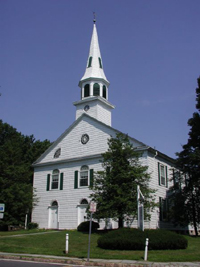
In 1850, East Millstone, then known as Johnsville, was a small community that consisted of no more than an old hotel, three or four farmhouses, a school, and a few stores. The town was known as a grain depot and, in 1854, the Millstone Branch of the Pennsylvania Railroad was built to serve a distillery where Fleischmann’s yeast was made, bringing in an influx of railroad workers. With this increase, considerable growth ensued in business and prosperity.
At this time, most of the people who lived in this section were members of the Hillsborough Reformed Church across the river. A Methodist Church was organized about one year prior, and a great deal of “agitation” began to become apparent for a Reformed church in the East Millstone community.
The Classis of New Brunswick appointed a committee on June 19, 1855, to consult with the consistory of the Hillsborough Church and the people of East Millstone. On July 15, 1855, the committee reported for immediate organization. Classis met inside of the Hillsborough Reformed Church to organize this new East Millstone Reformed Church, with sixteen members coming from Hillsborough and two from Six Mile Run Church respectively. A consistory of four was then chosen, thus forming the original congregation of eighteen members. On October 9, 1855, the member roll was taken and this church was officially born.
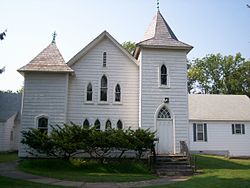
With the church now instituted, Rev. Dr. Mesick preached a sermon from Acts 9:31 (KJV): “Then had the churches rest throughout all Judaea and Galilee and Samaria, and were edified; and walking in the fear of the Lord, and in the comfort of the Holy Ghost, were multiplied.”
The original 18 members are as follows:
From Hillsborough Reformed Church:
- Cornelius Cornell
- Mr. and Mrs. Richard H. Kuhl (deacon)
- Mr. and Mrs. John Stines (deacon)
- Wm. Wyckoff and wife
- Mrs. Moses Condit
- Miss Jane Van Nest
- Mr. and Mrs. Cornelius Broach (elder)
- Mr. and Mrs. William W. Van Doren
- John V.A. Merrell (elder)
- Mrs. Cornelius T. Hoagland
- Miss Ellen Loisa Broach
From Six Mile Run Church:
- Mr. and Mrs. Brogan B. Van Nuys

On October 16, 1855 the building committee began to advertise for bids for construction of the new church. The winning bid was given to Mr. William H. Smith to begin construction.
During the first winter, services were held in the local school with seminary students of the New Brunswick Theological Seminary conducting services. A lot for the church was purchased for $300, and the edifice began in the spring of 1856. Dr. John Ludlow of the seminary laid the cornerstone and Dr. James M. Mathews of New York preached the dedication sermon. The total cost of the church, including the land and bell, was $5,748.23. The new church started with a debt of $2,353. The bell, which has been perched in the bell tower since the building’s construction, was purchased from the Meneely Bell Company in West Troy, NY.

Beginning to Grow: 1856-1858
Gilles Van de Wall, a Hollander, was ordained and installed as pastor on July 9, 1856. His salary was $500. Through the generous donations of other area churches, local efforts, and friends in New York City, the church debt was reduced to $800. Pew rents were fixed by the minister and consistory, varying according to location. When the first pastorate ended on June 8, 1858, the membership was at 46.
Tripling Size: 1858-1863
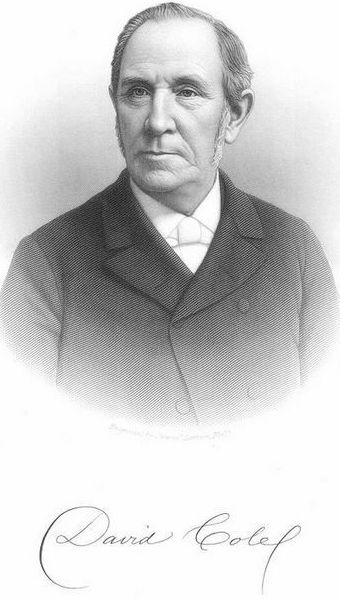
David Cole came to this church for his first pastorate on November 23, 1858, at a salary of $750 and a donation. He proposed the erection of a parsonage and offered to pay rent towards its cost. At an outlay of $3,300, it was ready for occupancy in October 1859. The ministry of this kindly and fatherly man ended April 1, 1863, when he became professor of Greek language and literature in Rutgers College. The church membership at this time reached 130 members. In his ten-year anniversary address, Pastor Cole singled out three men in particular for being the driving force behind the beginnings of East Millstone Reformed. Those three men were Mr. Ernestus Shenck, Dr. Garret Van Doren, and Mr. John Merrell.
Prayer Warriors: 1863-1866
Martin Luther Berger, after finishing his studies at Union Seminary, began his ministry at EMRC on May 1, 1863. The entire church debt, now reaching $4,500, was removed. Along the sides of the church were four long pews that ran the entire length of the building. During these early years, many men attended the prayer meetings, often also going to the sick and shut-in. There were at least sixteen men at this time who could pray in public.
Organ Purchased: 1866-1870
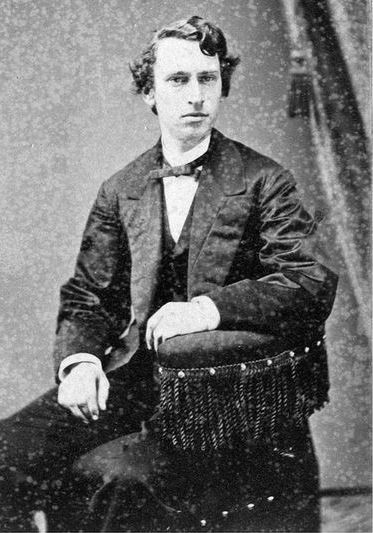
The church became the second pastorate of Rev. William Henry Phraner in 1866. It was at this time the preaching platform was enlarged and the alcove built for a pipe organ costing $1,200. This organ preceded similar organs in the neighboring churches at Middlebush and Millstone by quite a few years.
As an aside, the pipe organ was later sold by Calvary Baptist Church to a Presbyterian Church in Manassas, VA This organ was originally manufactured by the Odell Pipe Organ Manufacturers and was the 80th organ ever produced by the company, making it only the fifth produced for a reformed congregation. This very same organ would later be bought back by the company and fully restored to its current condition. An estimate for the organ’s current value is approximately $70,000.
Sunday school for adults and children under Phraner was held in the church basement Sunday afternoons following worship. Long before the church was organized, there was a Sunday school association in the village. This association eventually became the church school. Housed in the church basement was another private school. The first teacher was Frederick R. Brace.
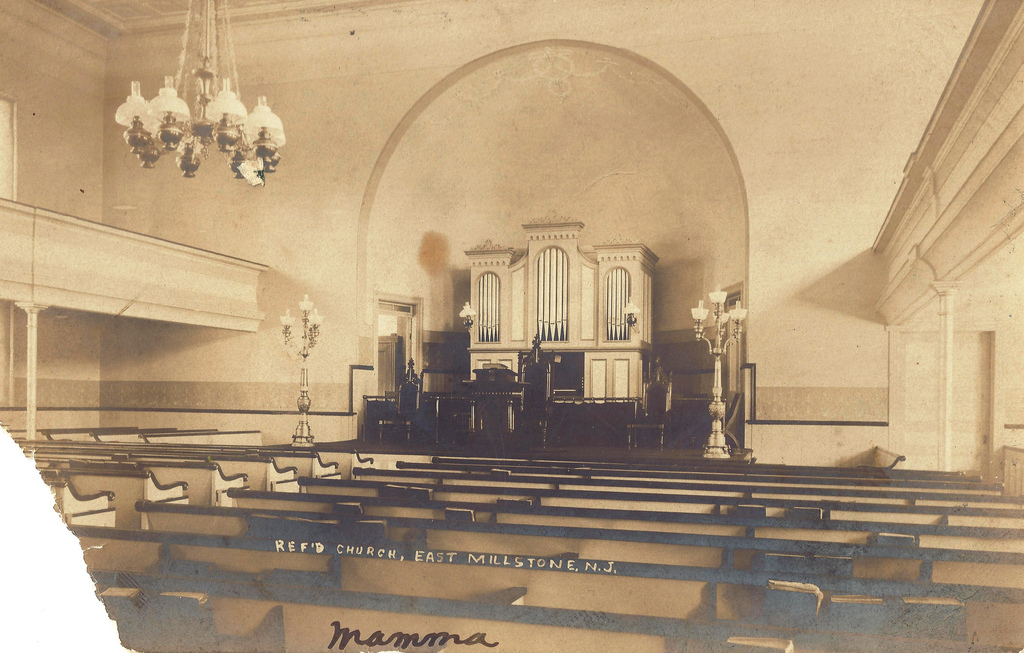
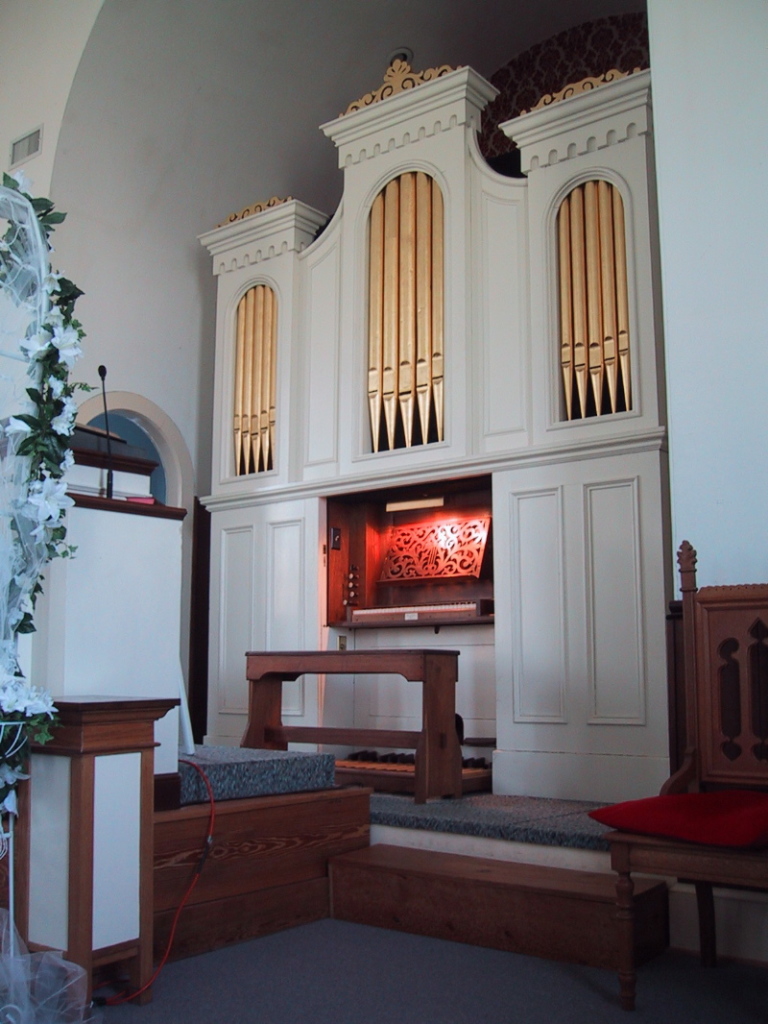
Growth Plateau: 1870-1890
Rev. Alexander McWilliam, a Scotsman, held the pastorate from 1870-1890. Many new members were received, but the inevitable changes of life kept the size of the congregation about the same.
Pulpit Tragedy: 1890-1891
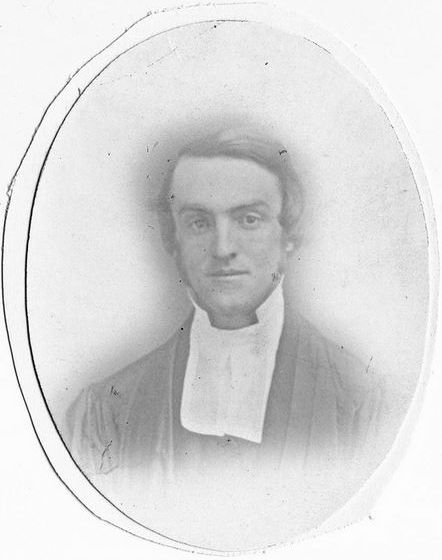
With long experience in the pastorate, Rev. Joseph Pascal Strong came to the church in 1890. At the beginning of his third month, he suffered a stroke while preaching the evening sermon and died a few hours later. During his very short stay, the Ladies Aid Society was organized. The circumstances of his death are worthy of record. It was Sunday evening, during the delivery of his sermon, that he was smitten with apoplexy. His text was in First Samuel 17:32:
“And David said to Saul, Let no man’s heart fail because of him.”
Reaching the third division of his theme, he was describing the Christian’s privilege of confiding in the power of God:
Deliverance is sure. It comes in God’s own way. God had salvation for Israel, but it was coming from a quarter not in the least expected. The young champion came back with Goliath’s head in his hand. Such triumphs are yours. Here God was exalted, and pride was laid low. So now, God wants not for deliverers. He loves, He knows, He guards His saints. His young soldier never advances to an exposed post, but Jehovah shields his picket on duty. But the morning star often arises in a different part of the heavens from what we look for—
Just as he was uttering these words, feeling himself tottering, and using the expression “falling star,” instead of “morning star,” he fell, and being removed to his home, died during the night.
Church Exodus: 1891-1901
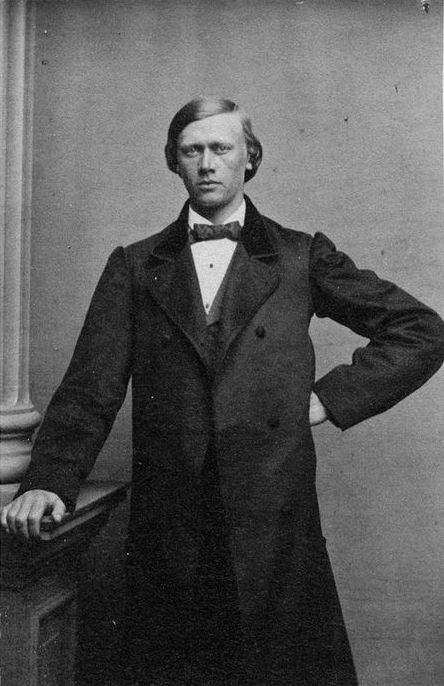
The Rev. Alonzo Paige Peeke was installed as pastor on November 8, 1891. The chapel (back portion of the main building) was added to the church at a cost of $1,400 and became the new home of the Sunday school. Mr. Peeke’s health eventually gave way and he had to cease his ministerial work. He died on August 20, 1900, while en route home by train. It should also be noted that after the death of Rev. Peeke, it was reported that there was a very brief period before Dr. Lockwood arrived when some other clergy were assigned to the church. One said something very “impolitic”, which in turn offended the African American members of the congregation enough to cause them to withdraw and form their own church—Saint James A.M.E. Church.
Growth Again: 1901-1926
Dr. Henry Lockwood served a long pastorate of 24 years beginning in 1901. By his own pastoral work and as a result of evangelistic campaigns, numerous additions were added to the membership. He held several responsible positions in the larger work of the denomination. Hope College conferred him the degree of Doctor of Divinity in 1916.
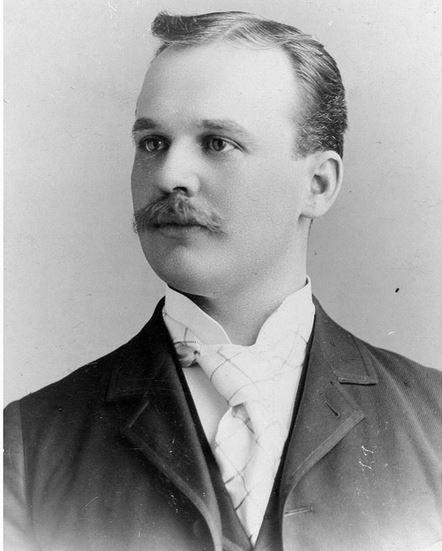
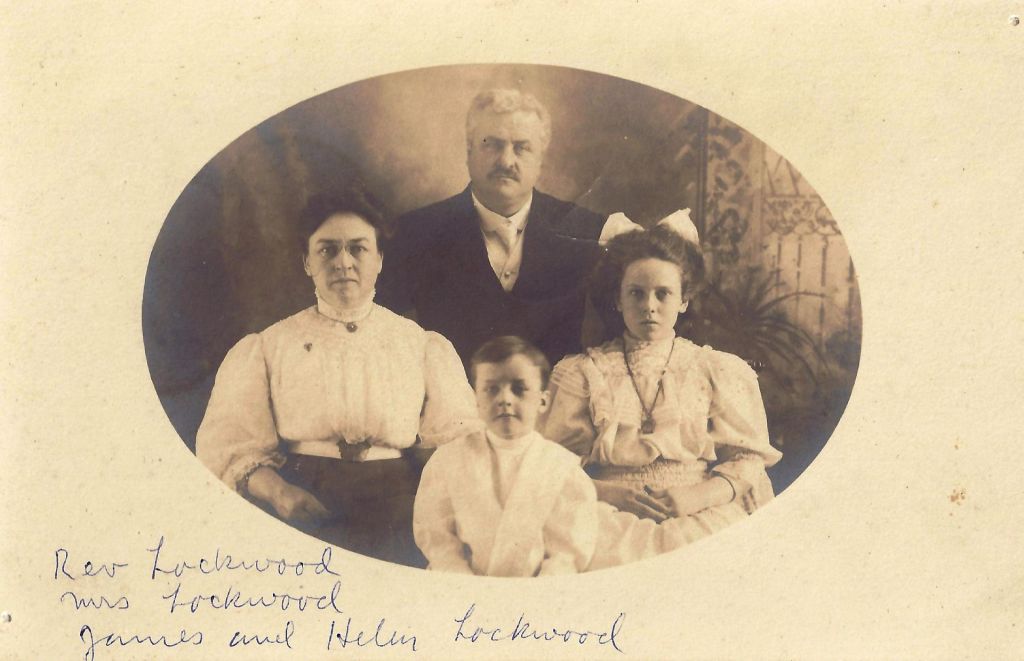
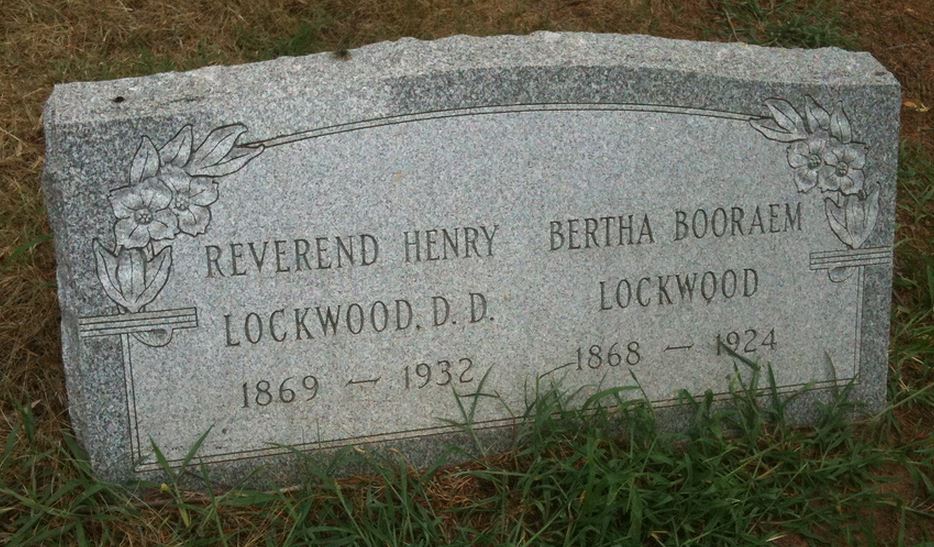
Junior Sermons: 1926-1929
In May 1926, Jacob John Sessler, a student in New Brunswick Theological Seminary, began his labors here. Upon his graduation in 1928, he was ordained and installed as pastor and continued until 1929. He introduced the “junior sermon” at the worship services; Christian Endeavor societies were strengthened and much work was done for the youth.
Losing a Father: 1930-1939
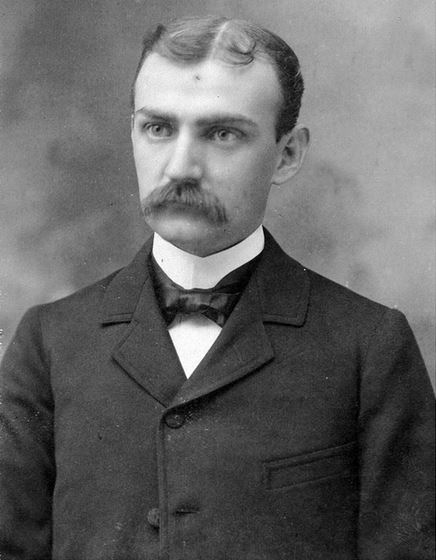
Rich in pastoral experience, Henry Clifford Willoughby became pastor in the fall of 1930. He endeared himself to his people by his kindly and fatherly manner. His sudden death on November 22, 1939, brought great sorrow to all.
Student Service: 1940-1948
During the next five and a half years, the church was served by students from the New Brunswick seminary. John W. Beardslee III was in charge most of 1940, Francis Edward Potter in 1941, and Lorenz Alexander Proli from 1942 to June 1945. These young men are to be remembered as excellent preachers and, as time could be spared from their studies, they rendered valuable pastoral service. With the manpower shortage reflected in the ministry as elsewhere, the East Millstone Church arranged with her neighbor church at Middlebush to have her pastor, Rev. Frank Alvin Langwith, become stated supply, conducting Sunday morning worship and rendering pastoral service.
Church Disbands: 1956-1973
During these years, Milton J. Hoffman (1956-1970) and Gerald W. Veltman (1970-1973) held pastorates at East Millstone Reformed Church. The researcher found no expandable materials to insert on these two men into this history account other than that Milton Hoffman is buried in the Cedar Hill Cemetery on Wortman Street, making him one of the two ministers buried there. The other is Henry Lockwood.
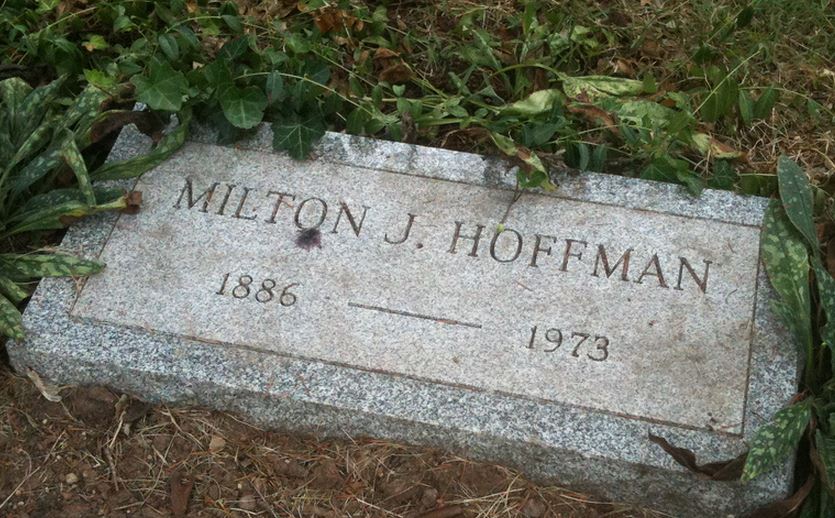
Edit: On November 3, 2013, we received a remarkable email by a person named Ingrid Jensen Szucs. Her family attended East Millstone Dutch Reformed Church from the mid-1950s to the 1960s! She was kind enough to produce for us an old photo of the Sunday School class dating around 1955, and gave us permission to present it here. Dr. Hoffman is pictured in the back!

Some time in the late 1960′s, the owner of the home on the corner of Franklin Street and Amwell Road, Stanley Garretson, died, and his nephews sold the property with its home and garage, now the church offices, to the church. The church would then go onto to sell its parsonage property and home to a florist named Jack Simko. Thus, the corner property home would become the new church parsonage. It is believed the home was built approximately 1929.
Rev. David McAlpine seems to have been an interim pastor when the church transitioned from the East Millstone Reformed Church to Calvary Baptist Church.
After a fierce wind storm on December 5, 1968, the church steeple was blown from its foundation and fell through the south side of the church roof. You can see a mention of the event in the church’s records here.
Sadly, towards the end of the 125 year life of that congregation, the East Millstone Reformed Church dwindled to as few as 50 members in 1975. With attendance and income so low, it proved no longer feasible to keep her doors open. The Lord’s Day of February 2, 1975, was the last service for East Millstone Reformed, with the final disbanding transaction occurring on July 1, 1975. Rev. McAlpine agreed to continue as shepherd to the remaining members of East Millstone Reformed until they were able to find new church homes. The only known members to transfer from EMRC to Calvary Baptist Church were Floyd and Peg Evans.

The baptismal bowl, which had belonged to East Millstone Reformed for over one hundred years, was donated to the Readington Reformed Church after theirs was stolen after a break in.
The very last church service bulletin of East Millstone Dutch Reformed Church can be seen here, and the last entry of the consistory minutes may be seen here.
Baptists Begin: 1975-1985
Calvary Baptist Church was originally located in a house (owned by one Dick Barlow) on Elizabeth Avenue between Weston and School House Roads; Dave Fake was the first minister. He was succeeded in 1974 by Foster Parnell, under whose leadership the building was purchased. The property was valued at $84,500 in 1975.
The first hymn sung as Calvary Baptist Church in this building was “Old Time Religion” during its very first service on February 9, 1975, with approximately 40 people in attendance.
Detroit born Geary Lee Burgess took over the pulpit in October 1976, and it is during his pastorate that renovations of the church began. Geary also at one time conducted a radio program on Sundays from 1972 to 1976 over radio station WCAC in Carthage, Illinois. During his time at Calvary Baptist Church, membership rolls grew to just over 100 members. Geary would also go on to become chaplain to the fire department just across Amwell Road.
Reformed Doctrine: 1985-Present
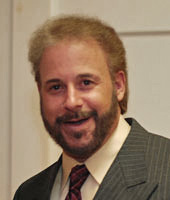
In 1985, Joseph Babij came to Calvary Baptist Church after serving at a church in Avenel, NJ. He came to know the Lord while serving aboard the U.S.S. Saratoga in the United States Marine Corps.
Although he was a successful enlisted man and initially had interest in pursuing a military career, Joe Babij believed the Lord to be calling him out of the armed forces and into pastoral ministry. Shortly after he left the marines, he was married to his wife Jayne and entered Northeastern Bible College in Essex Falls, NJ, where he completed his B.A. in Biblical Literature. Since then, he has completed graduate work at Baptist Bible Seminary in Clarks Summit, PA, where he received his Masters of Ministry, and The Master’s Seminary in Sun Valley, CA, where he received his Masters of Divinity. He earned his Doctor of Ministry degree at Trinity Evangelical Divinity School in 2014.
Under Pastor Babij’s ministry at Calvary, the church began to embrace Reformed doctrine (the Doctrines of Grace) and became increasingly interested in and serious about Biblical theology in general. Sound, verse-by-verse expository preaching became the hallmark of the church, and today, many of our church’s members come from quite far away (some an hour or more) to hear the Bible preached. In 2017, Calvary Baptist Church renamed itself as Calvary Community Church.
Bonus Pictures
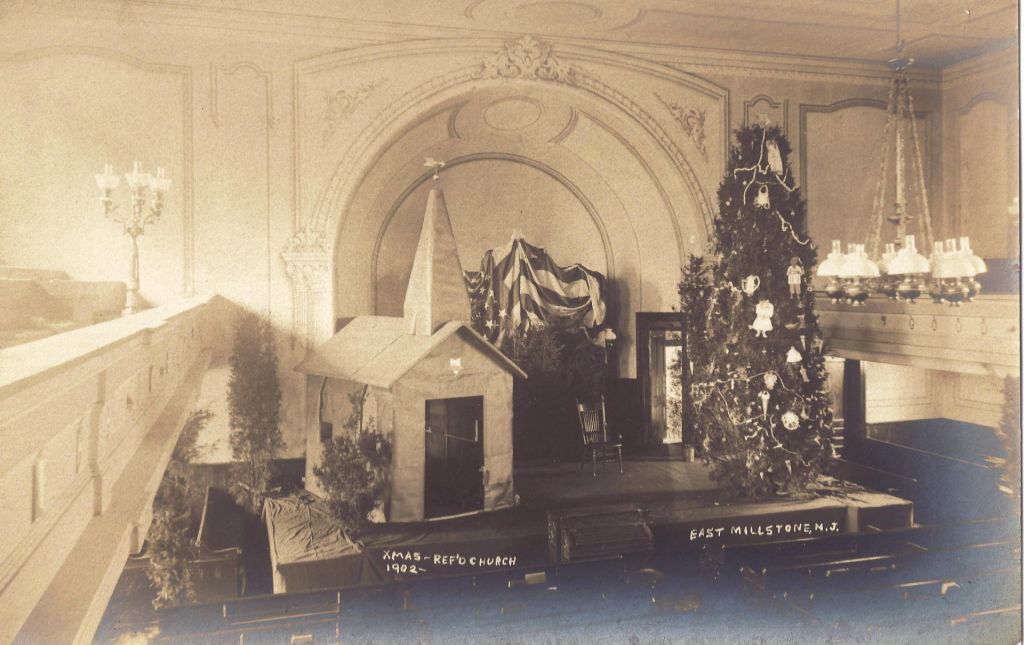
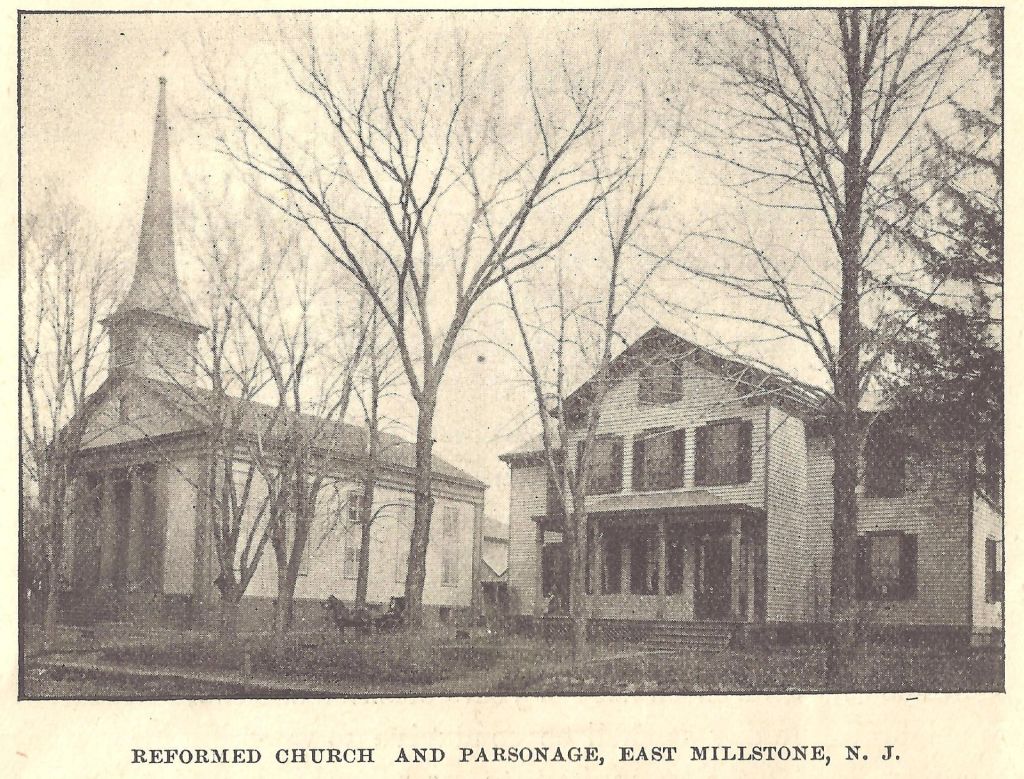
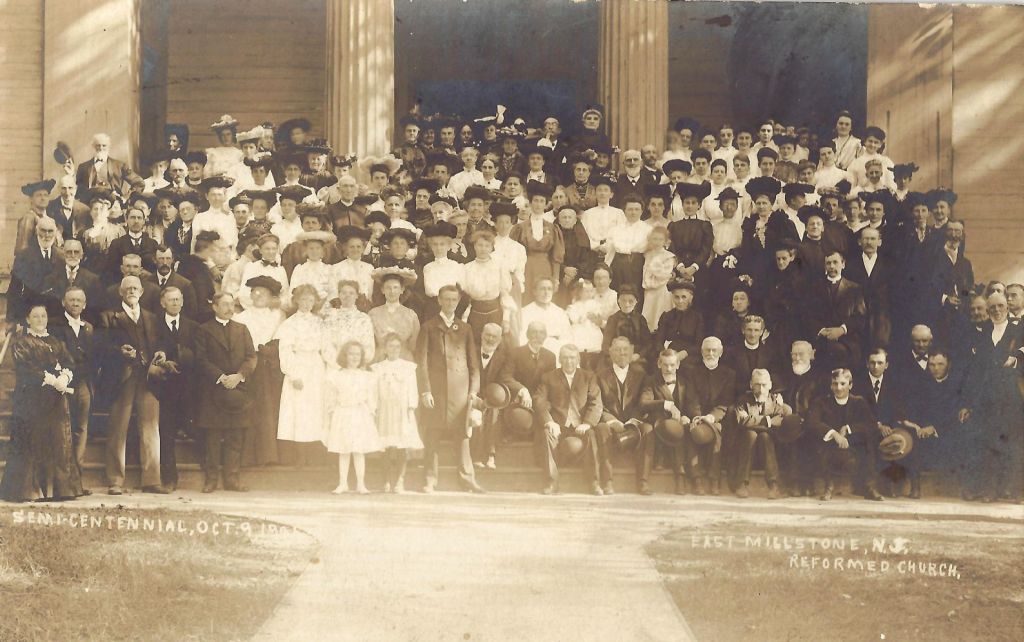
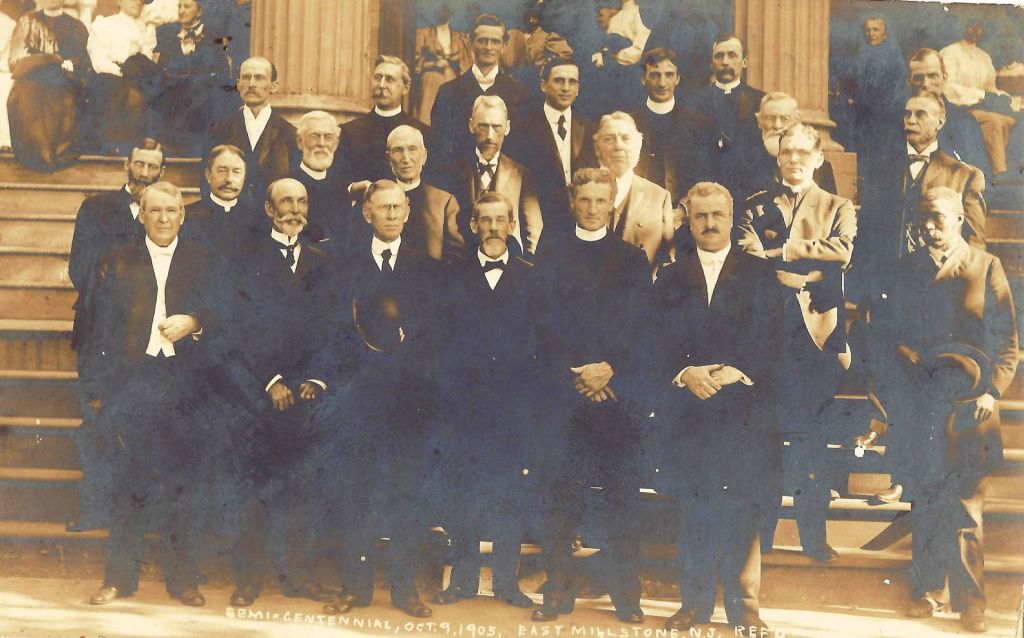
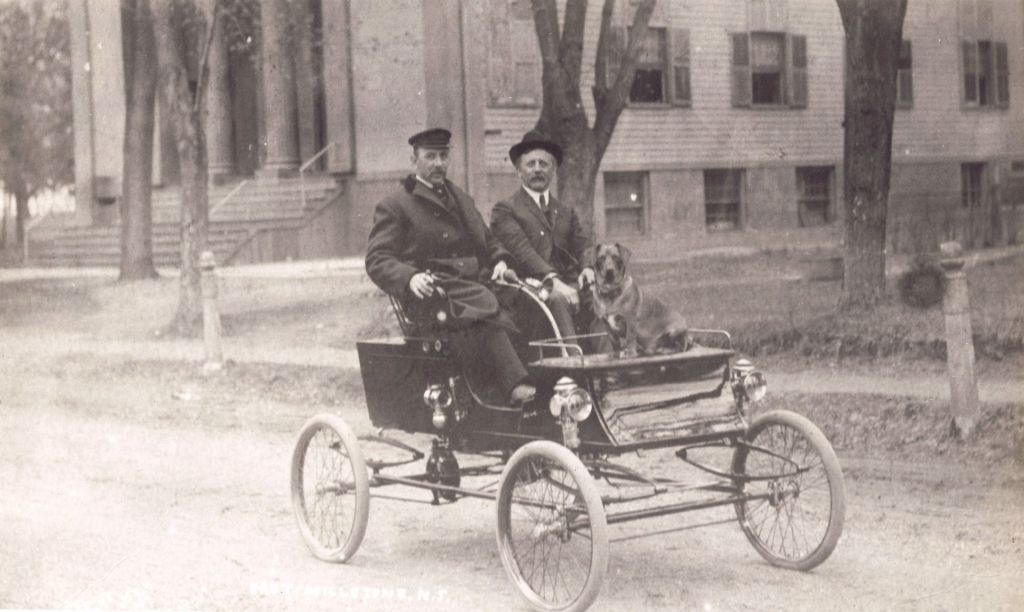
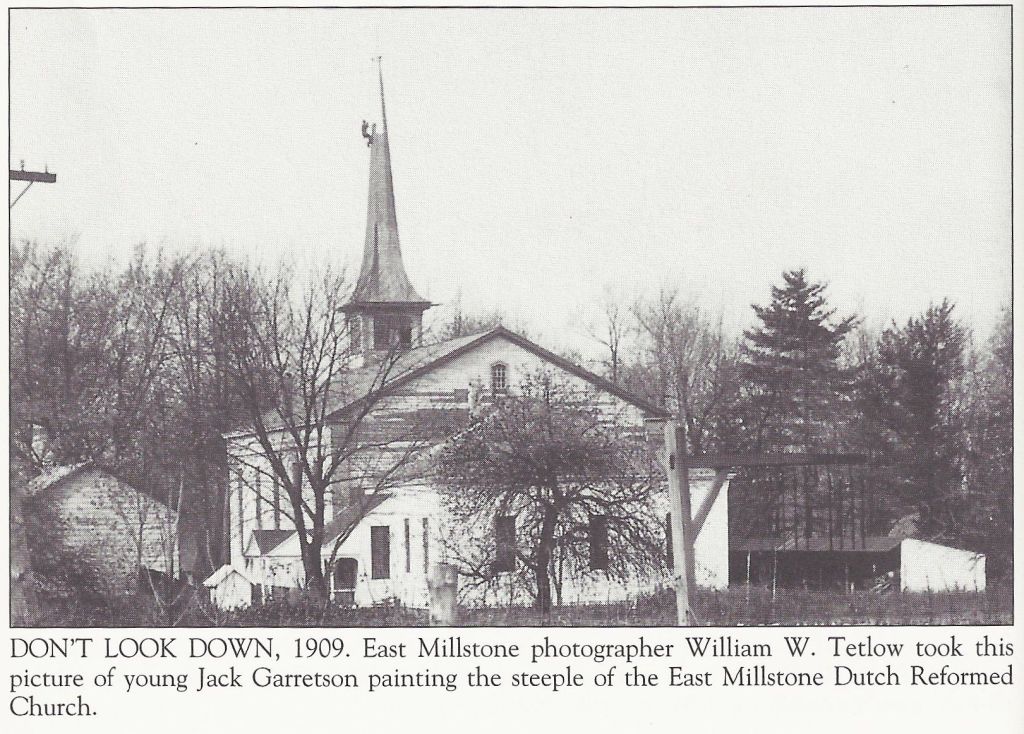
Historical Documentation Archive
Below you will find all documentation concerning the history of this church.
- 10 Year Anniversary Historical Address
- 40th Anniversary Historical Address
- 80 Year Anniversary Recollections
- 90 Years
- 100 Year Anniversary Bulletin
- Ordination of Pastor Sessler Bulletin
- Star of Wonder Christmas Bulletin
- Old Membership Rolls
- Consistory Minutes, 1962
To view the entire collection of scans, images, newspaper articles, bulletins, books, and photographs concerning the history of our church, please visit the Calvary Baptist Church Collection.

